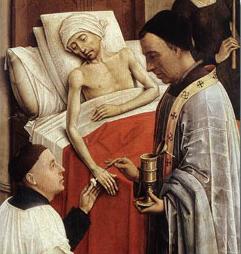C.S Lewis is a classical English writer of the 20th Century. His observations on grief are insightful as well intense as he documents the grief felt of losing the wife, H. Throughout, his work, “A Grief Observed” (originally published in 1961), the loss torments the writer as he proceeds through the various struggles of an English Christian husband who lost a wife. His struggle includes the intensity of the pain of the grief and its many adjectives and similes, as well as the outward feelings towards others, his past, his beliefs, his anger, his desolation, and finally his renewal. In it one sees the numerous phases and oscillations of the messy roadmap of mourning. It is not only an emotional journey, but also a philosophical one that questions pain and suffering and how it can co-exist with a good God. It captures the the progress and regression of how one laments one day but rejoices the next, curses another but venerates later. It is in essence a progression of grief that illustrates the despair, the anger, and ultimately the adjustment to the loss. It does not offer a true happy ending but an appeasement and contentment that naturally overtime proceeds from loss. One never truly heals from loss but learns to live without but with a sprinkle of hope.
Grief
C.S Lewis masterfully captures some of the raw emotion associated with intense and acute grief following loss. He states, “Noone ever told me that grief felt so like fear. I am not afraid, but the sensation is like being afraid. The same fluttering in the stomach, the same restlessness, the yawning and swallowing” (Lewis, C.S, p. 1). He continues that it sometimes feels like “invisible blanket between the world and me” (Lewis, C.S. p. 1).

Lewis mentions the continual acute phases of grief that overtake him. He feels fatigue that prevents him from doing the littlest things, such as even shaving (Lewis, C.S. p.3). In the grief, he feels the shame of being seen by others in public. He comments how some wish to walk away, or others try to say the right thing or how an younger married couple may think that he is a symbol of their future (Lewis, C.S. p. 10-11). He also fears publics places he once ventured. He is afraid to return too soon to places where he and H. once shared good times. He compares it to as “sending a pilot up again as soon as possible after he’s had a crash” (Lewis, C.S. p. 11). He in particular takes offense to the good willed sayings of others within the congregation who remark that H. is now in God’s hands. This only frustrates him more, as he asks, if she is in God’s hands, how can it be any better, if she was in God’s hands on Earth and suffered? (Lewis, C.S. p. 27). This is an excellent example of how in grief counseling, individuals should not try to fix the bereaved but sojourn with them and acknowledge the pain instead of trying to lift it.
A great fear of most grievers is losing the memory of a beloved. Lewis is haunted by the fear of losing her memory. He states, “I have no photograph of her that’s any good. I cannot even see her face distinctly in my imagination” (Lewis, C.S. p. 15). Others tell him, she will live in your memory, but he laments that idea of living. He exclaims in fear and anguish, “What’s left? A corpse, a memory and (in some versions) a ghost? All mockeries or horrors. Three more ways of spelling the word dead” (Lewis, C.S. p. 20). He further revels in the fear of those who have finally come to peace with loss. He remarks how he cannot envision how a man with a hoe and watering pot visiting the churchyard, happily exclaimed it was time to visit “mum”. Lewis remarks, “A six-by-three foot flower-bed has become mum” (Lewis, C.S. p.21). Yet, Lewis is not yet at the point to understand the continuation of bonds. The pain is still too raw, too soon, and too painful.
Wishing to see her again also, sways him back from grief to guilt. He wishes to see her but then sees this wish to bring her back is a selfish love. He corrects himself and realizes that this self pity is horribly selfish and to wish her back is a cruel endeavor, especially with the suffering she endured to escape this world. He speculates, “They call Stephen the first martyr. Hadn’t Lazarus the rawer deal? (Lewis, C.S., p. 41).
He reviews within his mind a mixed guilt of possibly getting over something too soon. Someone truly does not recover from such an operation. He compares this grief to someone losing a leg. One learns to adjust, but it forever affects oneself. When one awakes, or dresses, the reality is always there, even if one finds joy in day to day situations.
He also asks himself though, if there is shame in finding happiness, or if one is obligated to prolong one’s own unhappiness (Lewis, C.S. p.52-53). This is classical in grieving. One feels an obligation to grieve a certain time. Grief has no time table and each individual needs to process the grief and then without guilt, heal. It is obvious that Lewis understands this concept but poetically displays the inner pain of those who suffer loss.
Anger
Within the initial shockwaves of pain, Lewis articulates his frustration and anger with God. He points out that God is always around when one is happy, but when you need Him, he refers to it as ” a door slammed in your face” (Lewis, C.S. p.6). He does not fully come to any conclusion to deny the existence of God, although he does question the goodness of God. He points out that Christ too was forsaken, but does that make it easier to understand? (Lewis, C.S. p.6). He begins to view God as being who really does not care. In later chapters, he reflects on this anger. He states, “All that stuff about the Cosmic Sadist was not so much the expression of thought as of hatred. I was getting from it the only pleasure a man can get; the pleasure of hitting back”. He continues that what he thought he knew was not true, but felt that at least it might offed him or other worshippers (Lewis, C.S. p. 40)

Philosophically, Lewis does not dismiss the existence of God, but in acute grief, comments how one may believe God is far from good. He points out that “Is it rational to believe in a bad God? Anyway, in a God so bad as all that? The Cosmic Sadist, the spiteful imbecile? (Lewis, C.S, p.30). He wonders if this is good, then how is God good? He later reprimands himself for feeling this, but continues to question the reason for this cruel suffering. He laughs at himself how once he could tell those who suffered loss that their beloved one is in a better place. He remarks that he knew bad things could happen and even warned and prepared himself not to place happiness in the world, but he points out that once it happens to you, it is far different. Once being a source of faith, he know sees his faith as a house that has collapsed. He states, “If my house has collapsed at one blow, that is because it a house of cards” (Lewis, C.J. p. 37). He mocks how he once so easily gave advice, but now cannot it for himself. Was it because he truly did not care about others, or that he never truly understood the severity of it?
Healing
Stemming from the long suffering and pain, Lewis slowly begins to heal. He begins to realize his love remains and he can even sometimes hear his wife in a different way. He remarks his great fear of losing her memory, but now has a sense of her. He comments, “She seems to meet me everywhere. Meet is far too strong a word. I don’t mean anything remotely like an apparition or voice. I don’t mean even any strikingly emotional experience at any particular moment. Rather, a sort of unobtrusive but massive sense that she is, just as much as ever, a fact to be taken into account” (Lewis, C.S, p. 51). He also remembers how easily he could misjudge a man in a similar situation who now has happiness despite the loss. He remarks, ” I might have said, ‘He’s got over it. He’s forgotten his wife’. but the truth was, ‘He remembers her better because he has partly got over it'”(Lewis, C.S., p.45).

He further remarks that even with God, he no longer feels the door is slammed shut. He states that sometimes God is there but one is too frantic to hear or be saved, as if a drowning man kicking and screaming (Lewis, C.S. p 46). He asks if God is the vet or the vivisector (Lewis, C.S. p. 40). Is God truly healing and helping the person through the pain into a better life. Lewis ultimately understands that God does not wish suffering but walks with the sufferers and relieves them of the pain and transforms them into life. While those on Earth, may not understand the ultimate mystery, and may refuse to hear, God is not the sadist, he thought in anger, but a rescuer. He sees God as the giver and H. as the gift. H. becomes the garden and God the gardener, or H. the sword and God the smith. God perfects His gifts in the next life and this gives Lewis comfort (Lewis, C.S. p. 62-63).
He confirms to himself that the road to H. is through God, but he also corrects himself and reminds himself that God should never be a means to an end. He realizes that through loving God, he loves H. and they will find union in that love together (Lewis, C.S., p. 68-69). He furthermore realizes that God no longer did not answer his knocking of the door or reject his needs. Lewis states, “it is not the locked door. It is more like a silent, certainly not uncompassionate, gaze. As through He shook His head not in refusal but waiving the question. Like, ‘Peace, child; you don’t understand'”(Lewis, C.S. p. 69).
Conclusion
From a Christian perspective, Lewis explains the emotional pain of losing someone and still being a believer. He triumphantly captures the nature of grief but also adds elements of Christian grieving. He proceeds through the phases and oscillations of grief and faces many existential questions. While reading the words, one truly can start to prepare or recall the true abandonment one can face in the pain of grief and how hard it is again to find solace and peace.
Please also review AIHCP’s Christian Grief Counseling Program. Those who are already Grief certified are eligible for the specialty program. Like the Grief Counseling Certification, the Christian Grief Counseling Certification is online and independent study.
Reference
“A Grief Observed”. Lewis, C.S. (1961). Harper Collins Publishers. (1994)
Additional Resources
“C.S. Lewis”. (2021). Biography. Access here
“C. S. Lewis”. Wikipedia. Access here
“A GRIEF OBSERVED”. Harmon, J. (2013). C.S Lewis Institute. Access here
“The boredom and the fear of grief”. Grady, C. (2021). Vox. Access here








